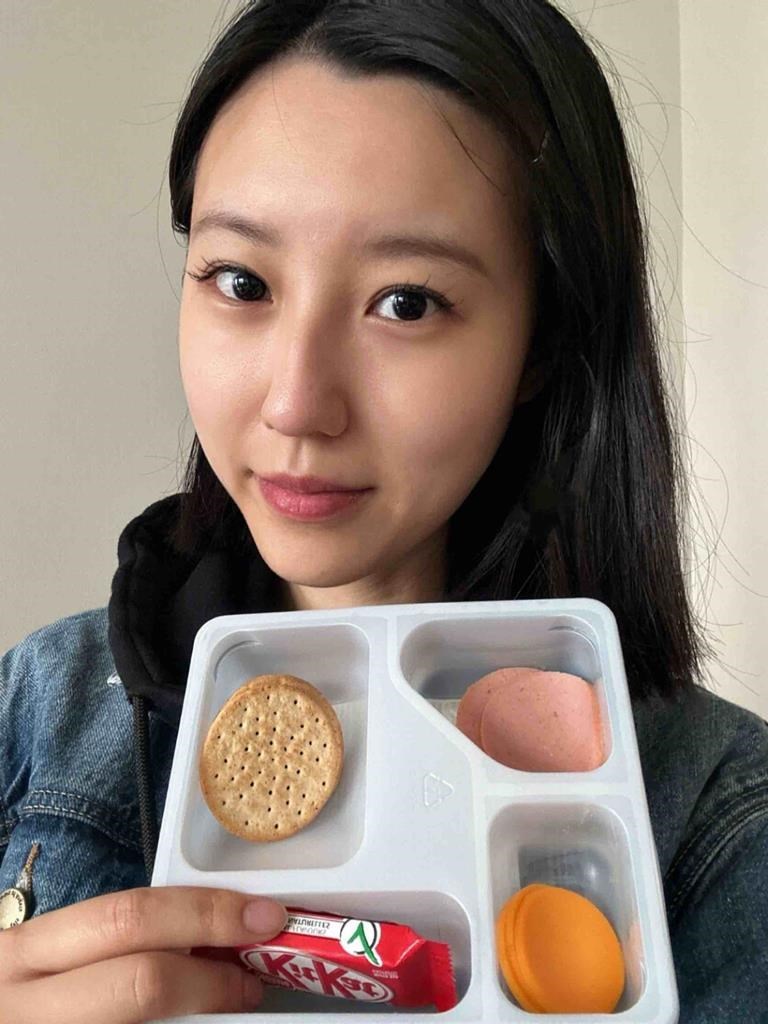VANCOUVER — Cheese sticks and a bagel. A boiled egg with raw broccoli. A fat ball of burrata cheese sitting atop a pile of green grapes.
Welcome to the divisive world of "white people food," a movement that has exploded in popularity among Chinese Canadian communities, both as an internet hashtag and lifestyle philosophy.
At its core are depictions of simple — some might say depressing — meals. Plain, often raw, and devoid of sauces and flourish, the meals are a source of bafflement for some but inspiration for others.Â
It echoes the recent Chinese social movement to "lie down flat.” A rejection of the relentless pace of the so-called 996 lifestyle, working 9 a.m. to 9 p.m., six days a week, that was once seen as an essential ingredient of Chinese success.
University of British Columbia sociology professor Amy Hanser said the "white people food" movement symbolizes a mindset shift among younger Chinese, and a counter to a life of long toil.
“It's not about the pleasure of eating the texture of the food. It's just like: 'this is good fibre and lots of nutrients and I'm going to eat it,' and I think that is actually a very American way of thinking about eating," said Hanser, whose research centres on work, gender and contemporary China.
A typical lunch box for Vancouver resident and "white people food" fan Shawn Liang consists of a boiled egg, fresh broccoli, a slice of ham, cheese and a piece of whole-grain bread.Â
He said in an interview in Mandarin that he once would have found such a meal difficult to swallow. Now he can't live without it.
Liang, who immigrated from Beijing six years ago, said cooking Chinese food can be time-consuming, labour-intensive and pricey.Â
 “Unfortunately, young people are always broke, overworked and don't have time," said Liang.Â
A lunch box of crackers and cold cuts might not sound worthy of fanfare, but University of British Columbia graduate student Lesley Pen recently shared a photo of the meal on social media with the Chinese-language "white people food" hashtag. She says she "fell in love" with such fare.Â
“Compared with traditional Chinese cuisines, which usually require lots of stir-frying, heavily relying on rich seasonings and sauces — white people food doesn't need any of these,” said Pen, a Richmond, B.C., resident who is majoring in food and environment, and economics.
“As a new immigrant who lives on my own and needs to juggle school and work, I find these meals are so simple and convenient to make,” Pen said in Mandarin, adding that they are also a dietary choice.
Pen said that "white people food" was a vague concept, but in essence meant keeping meals as “effortless and waste free” as possible.Â
Yi Gu, an associate professor at the Department of History at the University of Toronto, said many Chinese in the “lying flat generation” have turned toward self-care, given up demanding jobs, focused more on simple joys in life, and rejected excessive consumption.
But she said the white people food movement could also be about the relatively high costs of a cooked business lunch.
The concept is not new, but there has been a wave of Chinese-language discussion about "white people food" around the world since a video of a woman eating a bag of lettuce and slices of ham on a train in Switzerland sparked wonder. The video went viral on the Chinese-language social media platform Red Book last month.Â
The initial response to such meals was bewilderment.Â
"I have tried baby carrots dipped in hummus. They made me feel worse than death," wrote one person on Red Book.
But the mood has shifted to praise for low-effort meals.
Eva Wu, who works for a global tech company in Vancouver, said she's a fan.Â
“Here's the best part: these lunches are actually good for you and won't leave you snoozing at your desk,” said Wu, whose lunch usually consists of yogurt, a cheese stick and a tinysandwich.Â
But Wu doesn't call her meals "white people food," saying it sounds “overly generalized and racist.” Instead, she calls them “local-style light lunches.”
Tammara Soma, an assistant professor at the School of Resource and Environmental Management at Simon Fraser University, agreed the term could be potentially offensive.
However, Soma said the trend could also be understood as a way of “reclaiming the sarcasm” to show different cultural perspectives, since people from non-white cultural backgrounds are sometimes teased about their food being "odd and exotic."
“It’s kind of like the opposite response to the fact that non-white people’s food has generally been stereotyped,” said Soma.Â
Hanser, the sociologist, said there is a clear Chinese generational change at play. Some in older generations had high expectations for themselves and thrived in a competitive environment, while some younger Chinese now prefer to follow their heart.Â
“The younger generation is willing to try different things, experiment and see how they feel. There is a kind of openness to new experiences that goes with this trend as well,” said Hanser.Â
Richard Tang, a Vancouver TV camera operator, says he has been eating fresh fruits and vegetables for lunch for five years.Â
But Tang said in an interview in Mandarin that he made his simple meal “as multicultural as Canada” by including a clay-oven roll, a Chinese-style bread with sesame seeds.
“It’s baked by my wife with love as the ingredient,” chuckled Tang. “Parking my car in a quiet neighbourhood, enjoying my lunch and listening to a podcast — it's the loveliest time of my day.”
This report by The Canadian Press was first published June 16, 2023.
This story was produced with the financial assistance of the Meta and Canadian Press News Fellowship.
Nono Shen, The Canadian Press




